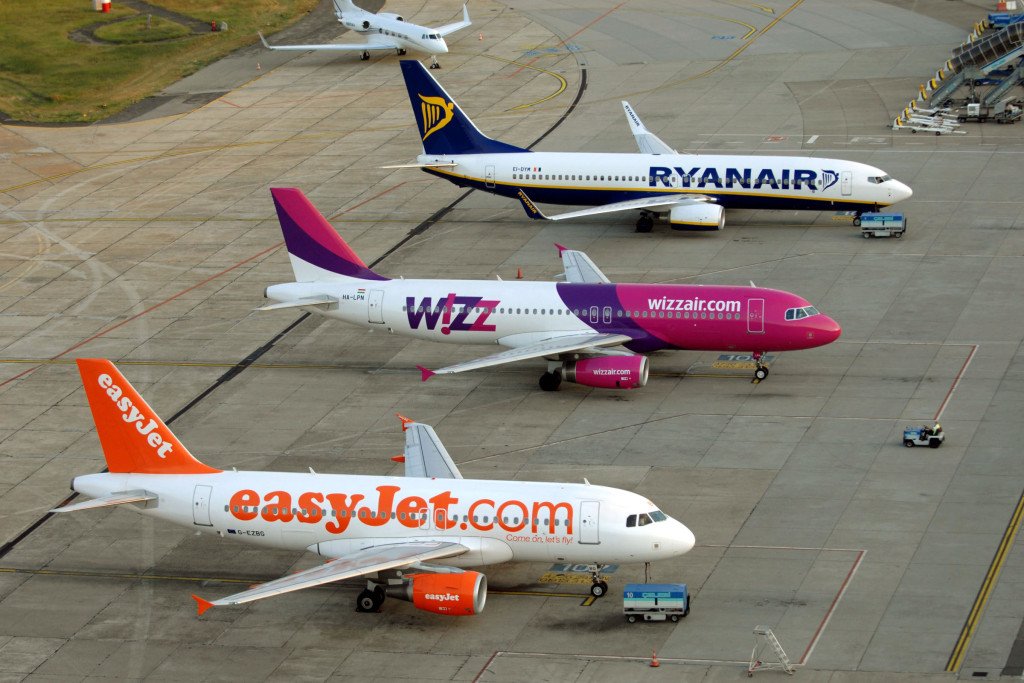Massive losses at Wizz
Q2 figures demonstrate the performance gulf between Wizz and its rivals
This week we got the June quarter results for all three of the big European low-cost airlines. This was the first quarter since the pandemic that could perhaps be described as something like "normal", with capacity at or above 2019 levels and decent demand.
This quarter is also interesting from a seasonal perspective. All low-cost airlines lose money in the winter and make money in the summer peak. But the April - June quarter is typically a fairly "average" quarter, and it therefore gives a reasonable indication of whether an airline is profitable or loss-making on a full-year basis.
I haven’t had time to dig deeply into the results, but I thought it was worth a short post showing the headline figures. They show quite a striking difference in performance, as you can see from the following charts. I’ve shown the figures in terms of €m and also expressed as a percentage of revenue, which gives a fairly “size independent” indication of profitability.
Source: Company reports
Ryanair is getting back to normal levels of profit
The first to report was Ryanair, and they came in with pre-tax profits of €183m, representing a 7% margin. That's a bit down on pre-pandemic levels (the company managed 11% in the same quarter of 2019), but definitely showing a strong recovery in profitability.
Their results were helped by high levels of hedging, which protected the company from escalating fuel and emissions prices. That will unwind towards the end of the year, but they have time to adjust pricing to compensate. They will need to do so eventually, but they have flexibility to prioritise market share gains in the short-term, which is what I expect them to do. I explored the issue more fully in this post.
EasyJet suffered from disruption costs
EasyJet also had decent levels of hedging, but its results were not as good, coming in with a £114m (€122m) pre-tax loss. They highlighted disruption costs of £133m and £36m of currency losses, giving them a "profit before bad stuff" of £55m (€59m), which would represent a 3% profit margin. Not as good as Ryanair, but at least it is a profit.
In 2019, they made pre-tax margins of 10% in the June quarter, so even ignoring disruption costs and foreign exchange losses, they still have some way to go.
Wizz set a new record for quarterly losses
It was a very different story at Wizz. The headline loss was an eye-watering €451m, a thumping 56% of revenue. It was by far the biggest quarterly loss in the company's history - and there have been some big losses during the pandemic.
As you might expect, the company was keen to highlight the “one-offs”. There was a €140m hit from foreign exchange losses, where US dollar denominated debt became bigger in euro terms as the dollar strengthened during the quarter. As the company said, this is “non cash” in the short-term, although if the exchange rate stays where it is it will turn into cash over time. It will certainly raise the company’s reported debt level, which is already high.
The company was also clobbered by higher fuel and emissions costs, thanks to its disastrous decision to stop hedging during the pandemic. If Wizz had achieved Ryanair's fuel and emissions cost per tonne of fuel, its results would have been €194m better in the quarter.
They also had disruption costs adding up to €60m. But even if you are feeling generous and adjust for all of those issues, the company would still have reported a loss of over €50m and a negative margin of over 7% of revenue. That's a full 14 margin points worse than the unadjusted results for Ryanair.
WIzz have started hedging again, but of course they are now doing so at much higher prices. The company’s pain is far from over. And as we’ve seen, the company is underperforming significantly, even after adjusting for differences in hedging.
Wizz's share price closely tracked Ryanair’s throughout the pandemic period, with both airlines perceived by analysts as structural winners. However since the start of the year, it has underperformed Ryanair by over 40%.
It is not hard to see why.



